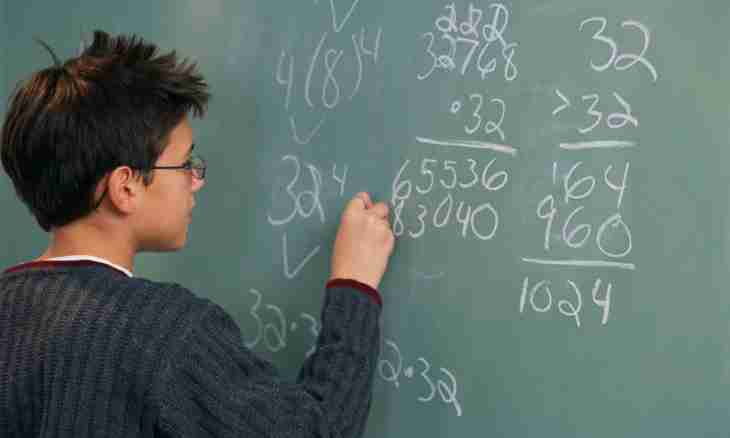Knowledge of how to solve quadratic equations, is necessary for both school students, and students, it can sometimes help also the adult with usual life. There are several certain methods of decisions.
Solution of quadratic equations
Quadratic equation is called the equation of a type of a*x^2+b*x+c=0. The coefficient x is a required variable, a, b, c - numerical coefficients. Remember that the sign "+" can change on the sign "-". To solve this equation, it is necessary to use Vieta theorem or to find a discriminant. The most widespread way is finding of a discriminant as at some values a, b, c it is not possible to use Vieta theorem.
To find a discriminant (D), it is necessary to write down formula D=b^2 - 4*a*c. The value D can be more, it is less or equally to zero. If D have more or less than zero, a root will be two if D=0, is only one root, it is possible to tell more precisely that in this case two equivalent roots have D. Substitute the known coefficients of a, b, c in a formula and calculate value.
After you found a discriminant, for location x use formulas: x (1) = (-b+sqrt {D}) / 2*a; x (2) = (-b-sqrt {D}) / 2*a where sqrt is the function meaning extraction of a square root from this number. Having counted these expressions, you will find two roots of your equation then the equation is considered solved. If the D less than zero, then it all the same has roots. At school this section is practically not studied. Students of higher education institutions have to know that the negative number under a root appears. Get rid of it allocating an imaginary part, that is-1 under a root always to equally imaginary i element which is multiplied by a root with the same positive number. For example, if D=sqrt {-20}, after transformation turns out D=sqrt {20} *i. After this transformation, the solution of the equation comes down to the same finding of roots as it was described above. Vieta theorem consists in selection of values x (1) and x (2). There are two identical equations being used: x (1) + x (2) = - b; x (1) *x(2) = page. And very important point is the sign before b coefficient, remember that this sign is opposite to that which costs in the equation. At first sight it seems what to count x (1) and x (2) is very simple, but at the decision you will face that numbers should be selected.
Elements of the solution of quadratic equations
By rules of mathematics some quadratic equations can be factorized: (a+x(1)) * (b-x (2))=0 if you by means of formulas of mathematics managed to transform in this way this quadratic equation, then safely write down the answer. x (1) and x (2) will be equal nearby to the standing coefficients in brackets, but with the opposite sign. Also you should not forget about incomplete quadratic equations. At you can be absent some of composed if it so, then all its coefficients are simply equal to zero. If before x^2 or x it is possible, then coefficients and and b are equal to 1.

